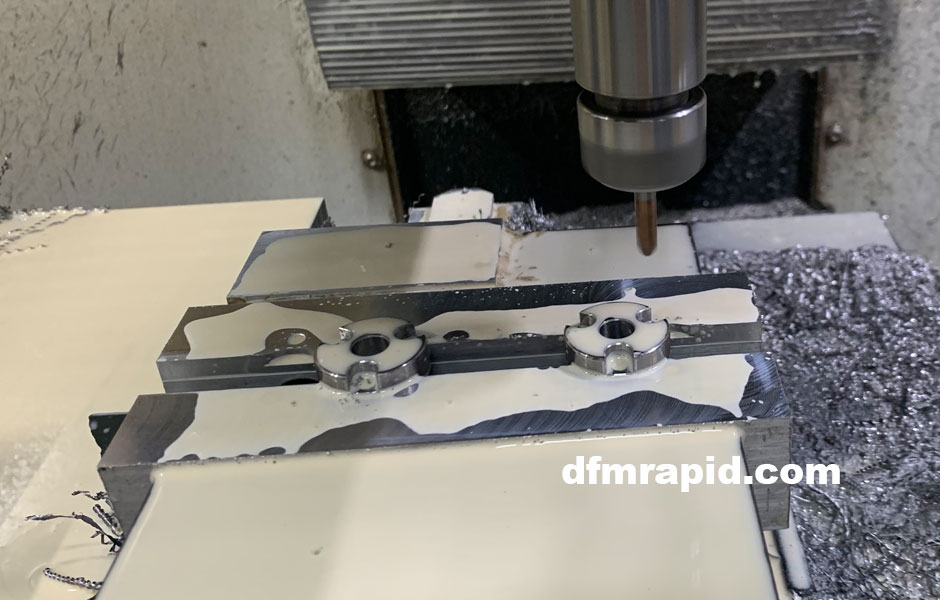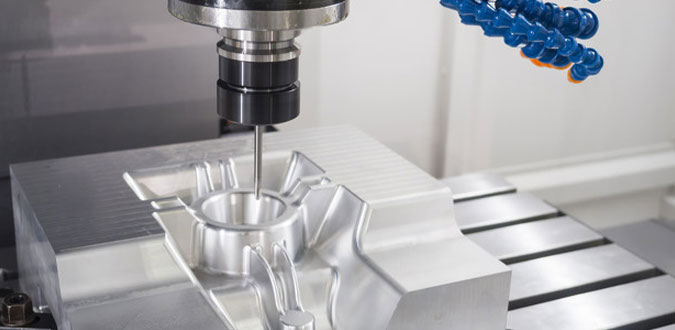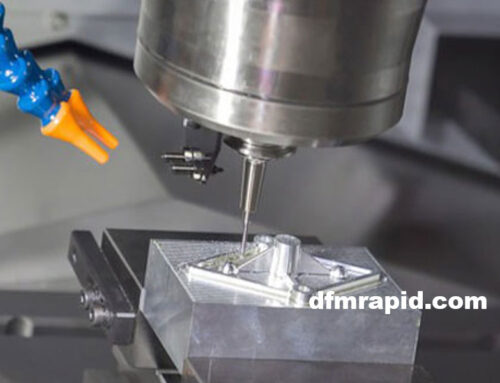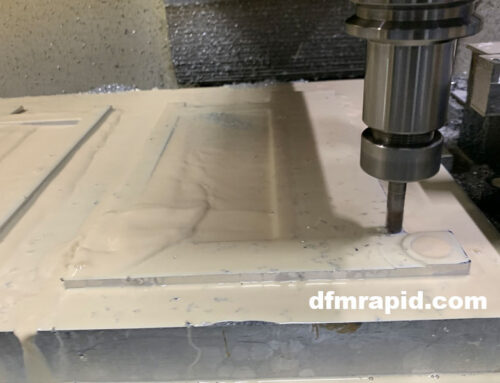CNC prototyping involves utilization of 3D solid model CAD designs as the input, and correspondingly fabricating the part directly from solid material through a computer controlled cutting and milling process. Some have used the term, “subtractive” rapid prototyping to describe this process, to contrast it with 3D printing, which is sometimes referred to as “additive” manufacturing. The subtractive aspect is that the CNC machine removes material from a starting material block to create the final part precisely to the CAD model specifications. With modern CNC machines, this material removal process is efficient, quick, and accurate to demanding specifications. Because of this subtractive nature, CNC prototyping allows for parts made from literally any material that is machinable and commercially available in cast or extruded stock. This provides material versatility and permits prototyping in materials that are often identical or very similar to those specified in production use. CNC prototyping suppliers offer an outstanding option for low-volume customized products and prototypes with precision results!
Why Choose CNC Rapid Prototyping?
When it comes to rapid prototyping, there are several different options. These include 3-D printing, sand casting, selective laser sintering, investment casting, fabrication, and CNC rapid prototyping. While they all offer unique advantages, there are some unique advantages to CNC prototype machining.
Six Reasons for Choosing CNC Rapid Prototyping
CNC prototyping offers numerous benefits. The fundamental benefits of CNC prototyping are detailed as follows:
- Digital to Physical Prototypes:
In CNC prototyping, the digital image or stimulation of the prototype is created. Once the digital stimulation shows the appropriate function of the prototype, and then only it is manufactured. This helps ensure the prototypes are built according to specifications. - Precision and Consistency:
In CNC prototyping, the CAD models with required dimensions are created. Numerous changes in the dimension can be made until the operator gets precise output on the screen. CNC machines offer prototype manufacturing in the exact precision of the CAD model. Multiple prototypes with varying designs can be manufactured repeatedly using CNC machining. - Material Compatibility:
Unlike 3D printing, CNC prototyping is a feasible choice if you are working with a diverse range of engineering materials. Since CNC prototyping is used for prototypes demanding mechanical strength, it allows the use of material like aluminum, steel, stainless steel, PPE, HDPE, etc. The range of material in CNC prototyping goes from engineering metals to engineering polymers. - Non-stop production:
CNC machines can work around the clock and require no human intervention too. If the prototype production time is time-consuming, then the operator can set the parameters and the machines will do the work with precision. Therefore, rapid prototyping in CNC machining is proven to be time-efficient. - Visual and functional accuracy of the final product:
CNC prototype manufacturing gives look-alike-work-alike prototypes. This means the visual and functional resemblance of a CNC prototype is very high and allows product engineers to envisage how the final product will look like. This makes the prototype testing effective. - Intricate Prototype Manufacturing:
Unlike additive prototyping methods, CNC machining is suited for complex product manufacturing. It offers the freedom to a designer to design intricate prototypes. Since it is a subtractive manufacturing process, material removal can help in customizing detailed features on the workpiece. Therefore, rapid prototyping in CNC machining comes with the benefit of detailing.
A Broad Reach
Prototyping and CNC Prototyping in particular can benefit any industry, whether aviation, automotive, architecture, aerospace, construction, medical, or something else that requires a finished product with precision and detail. Investing in the prototype process with CNC machining reduces the risk of time-consuming and costly mistakes.
Likewise, CNC is a viable option for many lower volume production projects. Depending on the geometry and material, whether a customer needs 1 or 1,000 units, CNC machining may be an excellent option as it eliminates the need for upfront tooling and molds due to its “on-demand” manufacturing methodology. Whenever a customer needs a plastic or metal prototype or multiple pieces in low volume manufacturing, CNC machining can be an outstanding process.
Ready to Save Costs on Your CNC Machining Needs?
At CNC Rapid, we’re experts at rapid CNC prototyping. Our dedicated prototype equipment includes 3-, 4-, and 5-axis machining and advanced turning capabilities to provide comprehensive solutions to an array of industries.
Get Affordable, China-made Precision Machined Parts Fast! contact us today for a free quote.






